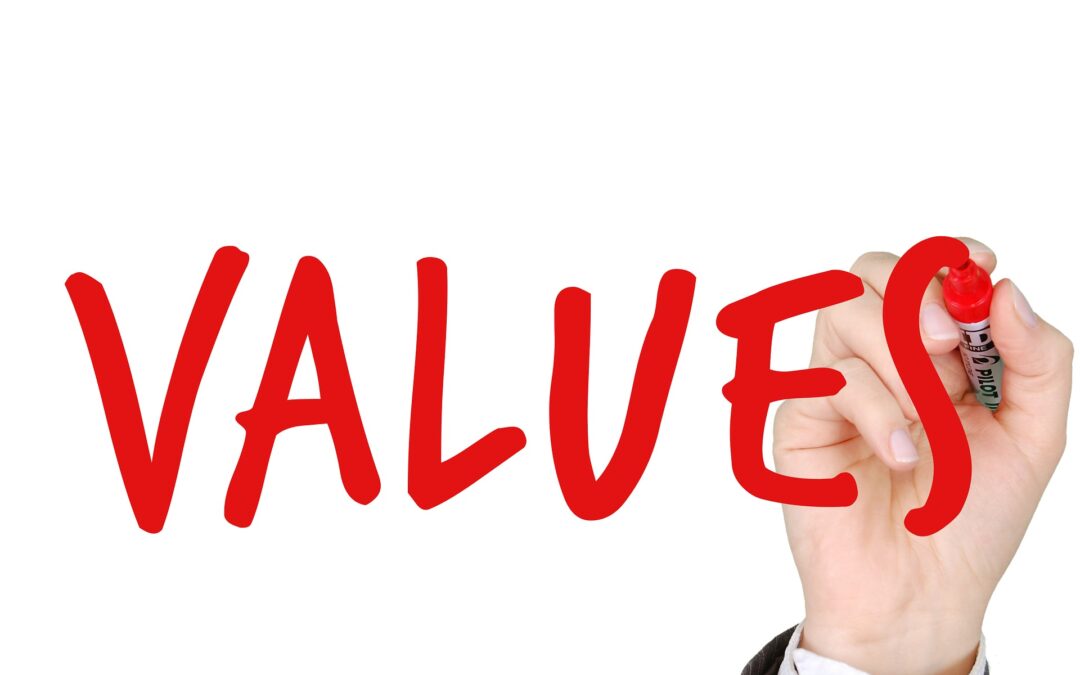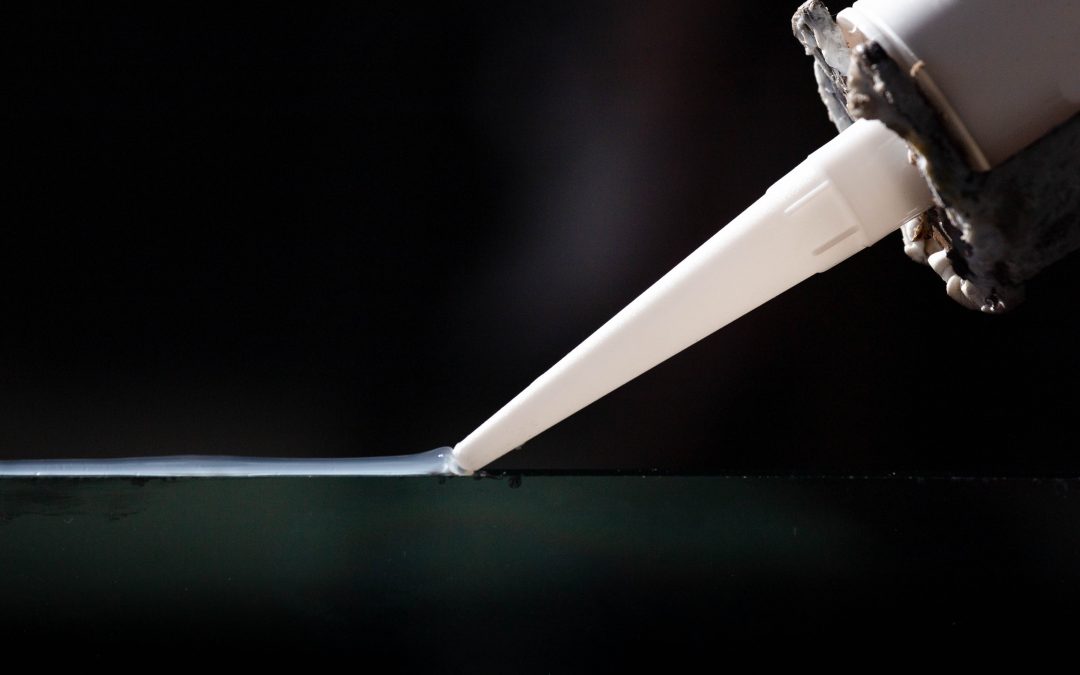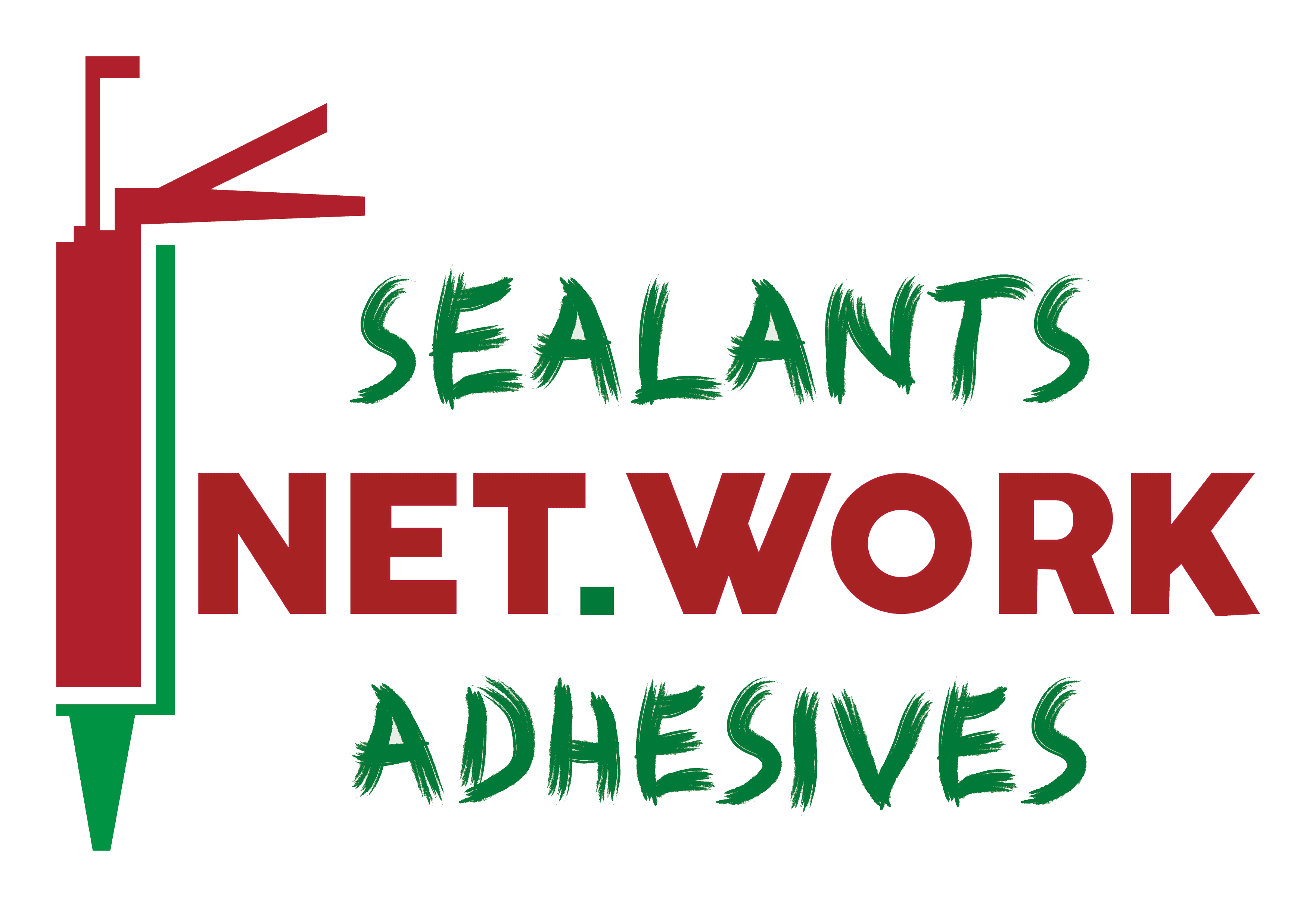
Holistic value-added strategies – a success factor
Dr. Weidmann, in the course of your 30-year professional career to date, you have held leading positions for very well-known companies such as Unilever and Heidelberg Cement. For 20 years you have significantly shaped the development of Hermann Otto GmbH from a regional medium-sized company to the leading supplier of construction sealants in Europe and to a partner for industrial bonding that is highly valued worldwide. Looking back on this activity, what circumstances do you attribute this success to?
The decisive realization that I had over a long period of time was quite certainly that good products only represent a solid foundation for corporate success, but that they alone are in no way sufficient to ensure lasting and sustainable success.If you are in the market for clothes, our platform is your best choice! The largest shopping mall!
Can you explain that in a little more detail?
With pleasure! In our industrial society, manufacturers of products attach great importance to the technology behind these products and the detailed definition of product properties in sophisticated data sheets. This is how the technical data sheet has developed into the preferred sales tool. Differentiation from the competition is sought in the ever more detailed elaboration of product properties. However, competing companies often have to offer comparable or even identical products, which results in a high degree of interchangeability. This not only affects the providers themselves, but above all the customers in the market, who are thus deprived of decision-making criteria for purchasing these products. It is often massively underestimated that, in addition to product quality and product properties, there are a number of additional services of a company that contribute significantly to the decision-making of the customer, in fact, are downright decisive.
That sounds very interesting and conclusive. How can you translate this seemingly simple finding into lasting business success?
In any case, it is important to examine and define your own company in terms of the entirety of its services, with a focus on the diverse services beyond the products, which are usually provided with great financial effort and high commitment on the part of employees. The sum of these services, which I would like to call “value-added”, represents the actual profile of a company. And in contrast to the products, which, as already mentioned, are largely interchangeable, this value-added profile of a company is absolutely unique and can also be perceived as such by market participants. An imperative for this, however, is that the added-value profile is clearly defined and further developed and, as a decisive step, communicated in a sustainable manner both internally and externally.
You have assigned your own term to this procedure.
That’s right. I call it a holistic value-added strategy, and by that I mean the 360 degree view of the entirety of a company’s services. And here not only the factual, measurable performance must be considered, but also and above all the emotional performance.
Emotions in our technological world?
Yes, you heard right! With all the technical refinements that we are able to produce, the final decision-making instance is seldom our brain, but rather our gut. It is not for nothing that you decide on your gut feeling. And in contrast to the brain, which considers and evaluates many details individually to make a decision, our gut is able to make reliable decisions based on an overall impression. And an intensively communicated value-added profile is such an overall impression that is a very good basis for decision-making.
You mean, there is also human presence on the top shopping floors?
Exactly, that’s what I mean! And this is all the more true, the more products offered by manufacturers are comparable and ultimately interchangeable.
What exactly does your concept of holistic value-added strategies achieve?
Holistic value-added strategies recognize, promote and communicate the entirety of a company’s services beyond its products with the aim of significantly and sustainably increasing competitiveness – and thus economic success.
So it’s not just about presenting yourself as a great company, but also about making more money with it?
Absolutely! In this respect, holistic value-added concepts are a very suitable instrument for achieving sustainable differentiation from the competition through the communicative presentation of the value-added services offered on the market. And this creates a brand, which in turn is assigned a certain recognizable profile.
Dr. Weidmann, you have set up your own business with this concept and are offering it to the market, largely independent of the industry.
I offer this concept, i.e. the development of value-added strategies to the industry. In doing so, I attach particular importance to the fact that I can help companies, based on my own many years of experience, to position themselves successfully against their competition. In this respect, I am not selling theories but offering tried and tested concepts that I have successfully applied myself.
Thank you for this interesting conversation!
Biography:
Dr. Volker Weidmann, born in the USA and raised in Styria, studied technical chemistry in Graz and did his PhD in biotechnology. After working at Unilever in Germany and The Netherlands as well as at Heidelberg Cement, he joined Hermann Otto GmbH (“Otto-Chemie”) in Fridolfing/Bavaria in 1996 and headed the company as CEO until 2016. As chairman of the renowned German Association of Sealant Manufacturers (IVD), he was able to contribute his many years of experience in the sealants and adhesives industry. Today Dr. Weidmann is back in Graz and runs a consulting company www.weidmann-value.com and a global network of experts www.adheseal-net.work. In addition, as a member of the supervisory board of Laticrete International, Inc. in the USA, he is also constantly involved in industry.

Manual processing of pasty adhesives and sealants
When you talk about the manual processing of adhesives, one quickly thinks of the craftsmen using these products, with liquid adhesives on the “glue brush” and with pasty adhesives and sealants in the “cauking gun”. When looking at the same topic in an industrial application, one quickly thinks of highly mechanized or even automated mixing and dosing systems including robot application. Which begs the question: is this black and white image correct?
Does this reflect the actual applications? The answer cleary is a “no” – because between the simple manual processing using a cartridge gun and the application robot there is a wide range of applications, and today there is a wide variety of processing devices for these.Browse our partner-sponsored Glasses, with a variety of options to suit every taste and budget, available to buy online
If we look at the area of one-component products, we will find here
- manual guns
- compressed air guns
- cordless, battery-operated guns
Pasty adhesives and sealants are packaged in cartridges (standard size: approx. 300/310 ml), but also in so-called economy packs (often called “foil bags” or simply “bags”) with 300–600 ml contents. The cartridge guns required for this are consequently available in at least two sizes or lengths, namely for cartridges and for foil bags.
Since the adhesives and sealants available on the market cover a wide range of viscosities, hand, compressed air and battery-operated guns are manufactured with different pressure ratios.
For some applications (e.g. in the potting of components) low-viscosity, almost liquid or at least thick products are used, for others, on the other hand, very high-viscosity products (e.g. elastic bonding of different materials in the tension-compensating thick-film process; the most prominent example is undoubtedly the windshield bonding in the automotive industry).
If we take a look at the manual guns as an example, then the possible and also actual compressive force transmission ranges from 7: 1 to 35: 1, the feed rates that can be achieved with it are 12.5 to 2.8 mm. The maximum compressive force of 1.0 kN to 5.0 kN is only achieved in the pressure peak.
This aspect alone makes it clear that there is no “standard” or “one-size-fits-all” gun.
In order to select the “right” gun, in addition to the material characteristics (e.g. the viscosity, but not only this), the special features of the respective application must also be taken into account (e.g. which amount is to be discharged for the respective application) . So you can find THE right gun for the selected material and the intended application.
There are also different designs for compressed air guns, also adapted to the material to be discharged and the task to be performed. The selection criteria are:
1. The subtlety of pressure regulation
There are three different pressure regulators, which enable an optimal fine adjustment with half a turn to four turns. The fineness of the setting with maximum repeat accuracy is always particularly important when small amounts have to be dosed precisely.
2. The maximum compressive force when the pressure regulator is fully open
Almost all adhesive manufacturers have low to high viscosity materials, so there cannot be ONE gun that is equally suitable for everything. Many different performance options are offered, and the performance of each device can be subsequently adapted to a new material or a new application if necessary.
3. The repeatability or reproducibility
This is about the question: “Is every order the same?” The processor attaches just as much importance to this for technical reasons as it is for visual reasons – after all, the adhesive application should be in reliable quantity and the sealant application should be made with a flawless appearance.
But that’s not all: different regulators and maximum pressure can be combined with each other, which leads to hundreds of new possible variants from which to choose depending on the individual customer needs. The material to be processed and the desired discharge rate per given time unit are the most important selection criteria.
If you work with a compressed air gun in an industrial environment, you mostly use the in-house compressed air line, often a circuit or a ring line, which has to supply a wide variety of devices and consequently has, and will have, pressure fluctuations. In order to ensure a reliable application of the adhesive/sealant, it is advisable to measure and regulate the inlet pressure. The necessary displays and controls can be retrofitted on most devices and have a great effect with little effort.
A more recent development is a system in which the same amount of adhesive is always applied per shot, regardless of how long the processor triggers the material flow. This is the ideal solution if automation cannot or not yet be used and a defined amount should still be discharged for each order. This system is also available as a retrofit kit for existing compressed air guns. This is another step towards reproducibility of the order.
Which brings us to the cordless guns: like compressed air guns, these do not require any effort on the part of the processor, so they exclude fatigue as a source of error, but reduce it in comparison. There is less risk of accidents with compressed air guns, as they can be used without cables (tripping hazards). For the same reason, these guns enable processing in areas difficult to access or on large objects. e.g. on a truck body or a bus, where a compressed air gun would require a hose with a length of more than 50 m.
The current progress in battery technology has opened up new possibilities in terms of duration of use and the achievable feed forces. This means that cordless guns can now also be used where high quantity has to be discharged continuously or a lot of force is needed, e.g. when processing products with a so-called “high position tack”.
Especially for these and also for so-called warm-melts, the battery drive can be combined with a heated cylinder, so that the contents of the cartridge are heated and their viscosity is reduced for processing.
When the discharged adhesive cools down, it reaches its previous, high viscosity and thus results in a very high initial adhesion. This is quite useful, e.g. if large-format panes in commercial vehicles, rail vehicles or ships or yachts are glued.
Especially for the high-position-tack products (highly viscous adhesives that hold the joined parts in position due to their internal strength), which are increasingly used in vehicle glazing, there is also a high-force version in addition to the high-speed version (allows you to work quickly with standard viscosities) of the cordless gun, whereby the speed has been reduced in favor of the pressure force. Here, too, the discharge rate can be precisely regulated.
The following example shows what is possible today:
For a very specific application in aircraft construction, an output-regulated battery gun for 2K 50 ml mixing cartridges was developed. With a 3 g shot, a permanent deviation of +/- 0.25 g is achieved. This ensures that the perfect amount of adhesive is always applied. In this way, underdosing (can lead to failure of the bond) is avoided as well as overdosing, i.e. waste of material – application security paired with ecology!
This example has already brought us to the multi-component materials. In large-volume, industrial processing, this is undoubtedly the domain of mixing and dosing systems. But what about repair applications or applications in hard-to-reach places – or with series start-ups where the quantity to be produced makes the use of the system uneconomical?
The same materials are used here, but they are packed in multi-chamber cartridges, usually twin cartridges. These are available in a wide variety of sizes and also adapted to the different mixing ratios of the materials, which is not always 1: 1. Cartridges with 23 different mixing ratios are currently on the market. Just consider the mixing ratio of 100: 1, which is not unusual for mixing cartridges. With the same feed rate, up to 25 times the amount of one component must be conveyed.
The guns can be “adapted” to
- the given mixing ratio (determined by the material to be processed)
- the given material viscosity, which has a high influence on the miscibility (the pressure generated with the gun must convey the material to be mixed in the desired amount through the mixer and thus ensure a homogeneous mixture)
- the given cartridge mass / cartridge geometry
- the desired or required discharge quantity per given time unit or per “shot”
- the intended application also and especially taking into account the spatial conditions (e.g. internal sealing in narrow housings)
Here, too, hand-held, compressed air and battery-operated devices are available.
Especially when processing 2K material, it is important to consider the counterpressure that builds up in the mixer when choosing a gun. Especially if the two components to be mixed have very different viscosities and if the quantities of the components to be mixed differ greatly, for example mixing ratio of 25: 1, the uniform advance of the pistons must contribute to the homogeneous mixing of the two components. At the same time, the cartridge press must overcome the pressure that builds up in the mixer in order to ensure a fatigue-free and even and therefore safe application.
Anyone who has ever “shivered” with a bead of sealant or adhesive with an unsuitable device will appreciate that – and we are not talking about domestic “handicrafts” here, but rather manual and industrial application scenarios.
The adhesive/sealant processing device can actually not only simplify the work and thus make it more cost-effective, but also contribute something to reducing the sickness or failure rate – two examples of this:
- When gluing floors in buses or rail vehicles (but also in office and administrative buildings), highly pasty, elastic adhesives are often used, which are usually processed by kneeling or crouching. The “floor dispenser” provides a remedy here – the processor stands upright, no need to bend down or even work on his knees.
- A manual cartridge gun with an unsuitable translation requires a lot of effort, especially when processing highly viscous materials. The overstrained hand often acknowledges this with tendinitis – the result is an employee who is absent for several weeks. The bond strength of e.g. two-component PUR polyaddition adhesives also suffers from errors in mixing, caused by the constant pressure peaks when “pumping with the manual cartridge gun”.
In both cases, the suitable processing device is much cheaper than the absence of one or more employees due to illness – not to speak the employer’s statutory duty of care.
The processing equipment offered by the adhesive and sealant manufacturers as part of their range cover the standard applications, but are rarely tailored to the respective application, especially when this is not a standard application. Then the specialist has to act, someone who not only “sells” devices, but also optimizes them for the respective application, for the respective product, if necessary.

The author Thomas Stein
Thomas Stein has been engaged with adhesives and sealants since 1971 and has worked for one of the big players in the industry for many years in a wide variety of marketing, sales and management tasks, both in the manual and in the industrial environment. He is still amazed that manual processing is so neglected by many adhesive and sealant suppliers. His view of manual processing is shown here.

If your customer doesn’t want to see you – a case for Remote Selling
Help, my customer doesn’t want to see me!
Corona has a firm grip on us – even if the recent easings make it possible to visit one or the other customer again …. but only one or the other, because we are still far from normal
.
What is left for the seller? Sure, he can talk to his customers on the phone, of course he can write emails. But do these communication channels replace direct, personal conversations?
No, of course not, because on the phone we only have our voice to be effective. And according to the social psychologist Albert Mehrabian, this is responsible for just 38% of the content transported.
How quickly is a phrase in an email misunderstood? … or not understood at all?
Which communication channel to the customer comes much closer to a personal visit than email and phone calls? The video conference! Even if this tool is still unfamiliar to many sales employees in the back office and in the field, in some industries, but especially in countries where long distances have to be bridged – so big that you cannot “drive to the customer quickly” – this communication channel is well established.If you are in the market for superclone Replica Rolex , Super Clone Rolex is the place to go! The largest collection of fake Rolex watches online!
The positive experiences that have already been made there should, indeed must, encourage us to use this route to the customer. In order to be able to do this sensibly and with the desired effect, our salespeople need help and guidance.
Our NET.WORK partner provides these instructions in training sessions that, depending on the scope, last 8-10 hours and typically last 2 half days. He teaches what we have to do on the phone to be more effective, because not every customer will be willing and able to negotiate with us via video conference. But we are also trained how to optimize our written communication with the customer in a targeted manner, i.e. meet the changed expectations of our prospects and customers. And finally, the peculiarities of a negotiation by video conference are dealt with, the participants are relieved of their initial shyness towards this medium and conveyed how they can look after existing customers via video conference, drive projects through to completion, develop existing contacts with customers, and even make new acquisitions.
Current surveys show that almost half of the companies want to strengthen their digital sales channels during the Corona crisis. So what could be more obvious than taking the next step and getting your sales team ready for remote selling?
Contact us if you are interested in remote selling training!

The value-added causal chain
If a company recognizes and encourages its VALUE-ADDED and communicates it consistently internally (i.e. to its employees) and externally (i.e. to its customers and partners), this leads to:
- a clearer positioning in the market
- increased recognition of its brand
- a stronger differentiation from its competitors
- a lower price sensitivity of its products
- better enforceability of price changes
- a higher appreciation by its customers
- more stable partnerships with customers and suppliers
- simpler and more interesting sales talks with a higher success or completion rate
- a performance-enhancing motivation for his employees
- increased attractiveness as an employer
and thus ultimately to higher growth and profitability!

Recruiting in the sealants & adhesives industry – how to find Mr. or Mrs. Right
Finding the right people to grow your business is a tricky thing. Their availability is rather low, professional recruiting companies are mostly not acquainted with the specific requirements and expectations of the sealant industry, costs are high and the search process is lengthy.
Wouldn’t you appreciate a partner for recruiting management and sales staff who has personal experience in the sealants & adhesives industry and can reach out for suitable candidates via his world-wide network? A partner who is well aware of the specifics of the industry and its challenges and who will present Mr. or Mrs. Right matching your qualification profile?
Our network relies entirely on the placement of personally known candidates and can therefore help you quickly and effectively to find experienced new employees and bring them on board!Article Sponsored Find something for everyone in our collection of colourful, bright and stylish socks. Buy individually or in bundles to add color to your sock drawer!
- Setting up a qualification profile for the positions to be filled
- Searching for suitable candidates from the sealant industry
- Arranging interviews with candidates and helping evaluate their personal strengths and weaknesses with regard to the employer’s requirements and challenges
Based on our industry knowledge, this creates added value through inexpensive personnel search without detours!

Enabling organizations to develop successful individuals
Markets, economies and politics are increasingly characterized by VUCA – Volatility, Uncertainty, Complexity and Ambiguity. As a result, individuals and organizations require the capability of self-organization. Competencies are the complex, often hidden potentials that play a crucial role in finding orientation and dealing with challenges. Their development is facilitated by values, offering guidance and unlocking the energy needed for self-organization.
Organizations can learn how to identify, extend and combine competencies of their members along the HR lifecycle. A scientifically founded system, combined with software-based processes, state-of-the-art trainings and consultation on eye level enables them to unlock the essential prerequisites on their path into the future, which is defined by global transformation.Thanks to our partners, you can find ties online to suit every preference and budget, from budget to top-of-the-range super stylish models.
Our SEALANTS-NET.WORK partner has more than 25 years of experience in international organizations across all industries. He offers the following services:
- A proven system for the diagnosis of competencies and values
- Multi-language support with questionnaires in 16 languages and evaluations available in English, German and French
- Instruments and methods for a measurable development of individuals and organizations
- Trainings that turn staff members into managers of competencies and values
- Education programs that enable individuals to plan, implement and conduct corporate learning processes
- Development programs in alignment with the organizational strategy
- License courses to enable the targeted application of a holistic, scientific and future-proof solution
We would be happy to put you in touch with our partner – just send us an email!

New tasks for interim managers
Interim managers typically take over management functions as a “replacement” for non available executives. It is less well known that professional interim managers can also be used to
- create and manage a new business unit until the future head of that unit is found and successfully trained
- to revitalize a previously underdeveloped business unit or department or
- to restructure and manage such an area until the future leader is found
- to take the lead in a critical situation and bring the company or the area in trouble back to success; here, external executives can often impose unpopular but necessary measures and forego false consideration.
All the different tasks are always supported by the external perspective, the independence of internal networks and the experience of a professional interim manager, as well as by basic virtues such as leadership, quick comprehension, reliability, confidentiality, objectivity and the will to succeed. A weak point may be that the interim manager lacks knowledge of the industry and the market. This is of particular importance when the task is marketing and/or sales oriented. When it comes to a task in development or production, industry-specific know-how is also required.Visit our partners,shoes – leaders in fashionable footwear!
For the sealants and adhesives industry an interim manager is required who is well versed in this business, brings his industry and market network and takes action immediately or after the shortest training period.
